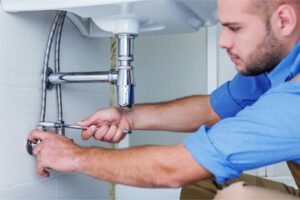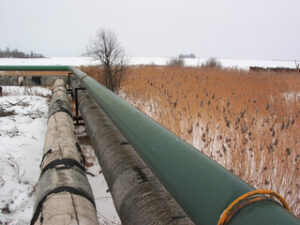What is Plumbing? The plumbing field encompasses all aspects of conveying fluids and gases through various apparatuses. Among these are pipes, valves, tanks, and fittings. This is a complex field that entails an understanding of both the technical and legal aspects of plumbing. It is the field that deals with laying pipes for a variety of applications. This field is a vital part of daily life and requires skilled professionals to ensure that water supply and waste disposal systems are efficient and safe.
Plumbing involves the use of pipes to convey fluids in various applications. In addition to pipes, plumbing fixtures also utilize valves, tanks, and other apparatuses. Listed below are the main uses of pipes in plumbing. The first use of pipes in plumbing is to transport water, but they also play an important role in many other applications. The third and final use of pipes in plumbing is for drainage. If the water is diluted or drained, pipes in plumbing can be used as an alternative to a traditional water tank.
PVC pipe is another material used for piping in plumbing. Its properties are superior to other materials and are flexible. These characteristics make it suitable for road plumbing. Another benefit of PVC pipes is that they can be cut to any shape or configuration without fear of fracturing or breaking. They can be easily unclogged compared to other types of metal drains. Unlike metal drains, they are comparatively lighter and can be carried by two people instead of three.
One of the most important parts of a building’s plumbing system is the pipes that provide a constant water supply to different areas and use. Different piping materials may be more or less ideal for a building’s needs, but steel pipe offers several advantages. This article will give you more information about the different types of pipes and how they may benefit your plumbing project.
When the drainage system in your home is clogged, water will back up and cause a foul smell. This is bad for your health because it allows harmful bacteria to breed. Additionally, stagnant water is not only unhygienic; it can cause various other illnesses. That’s why drains should be cleaned regularly. If you have blocked drains, call a plumber right away to fix the problem. Drains are extremely important, but they often get neglected.
If a drain gurgles, this is a sign that a sewer gas odor is leaking into the home. The drain trap is used to catch and hold standing water in the drain system. It also prevents sewer gas from entering the home. It can also be used to keep dirty water out of a sink or toilet. To keep your drain clean, use a drain cleaner or call a plumber as soon as you notice a buildup.
House drains receive waste and soil from sinks, toilets, and tubs. They are underground or in the basement. They are usually made of cast iron or extra-heavy cast iron to prevent chemical reactions. If you’re renovating or adding on to a house, you may find an underground drain pipe. This pipe runs through the foundation wall of the building and is hidden from view. Therefore, it is crucial to install a capstone over the drain to prevent solid deposition.
Pipe fittings can be a great way to connect two different parts of your plumbing system. There are many types to choose from, including elbows, spouts, and hose connectors. Nipples, for example, are short stubs of pipe that are male-threaded and used to connect two female-threaded pipe ends. They are used to prevent leaks and can be a great choice for tight spaces.
Tees and elbows are the most common pipe fittings. Tees are T-shaped pieces that have one inlet and two outlets. They are commonly used to connect two pieces of pipe or to change the direction of flow. They are available in equal and unequal sizes. They are made of different materials and are available in a variety of styles. They can be used with a variety of pipe materials and are often referred to as “screws.”
Couplings and elbows are two types of pipe connectors. The former is used to extend a pipe run while reducing its size. These types of fittings are sometimes called “bell” reducers because of their shape. They can be threaded or unthreaded for solvent welding and plastic glue. They are available in stainless steel or galvanized finishes. Some are made of a combination of metal and plastic, such as copper.



